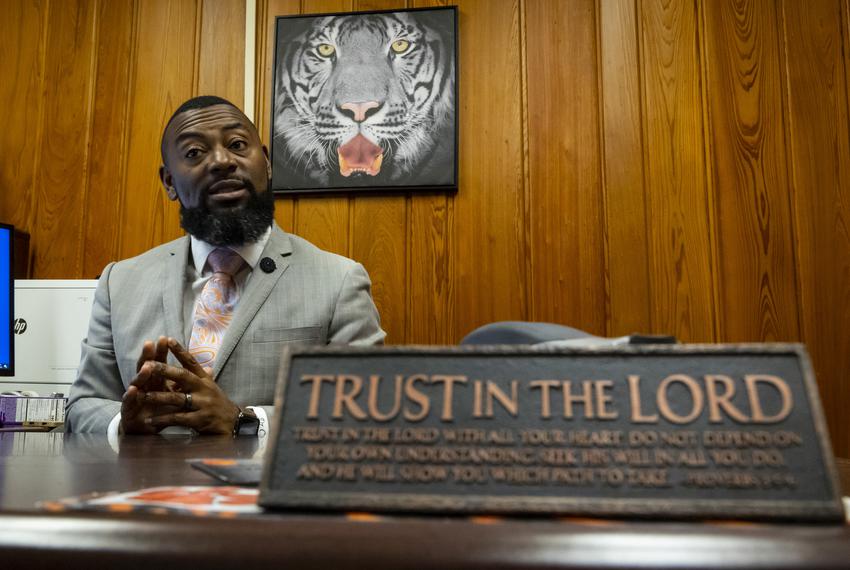Many seniors returning to the dating scene are not practicing safe sex. The health department is trying to change that. (Photo illustration by Priscilla du Preez via Unsplash)
In the past decade, sexually transmitted disease cases have skyrocketed in adults ages 55 and older in Oklahoma, a new study reveals, and now health experts are scrambling to help slow that trend.
The report, authored by HelpAdvisor.com, used Centers for Disease Control and Prevention data to determine how the rates of chlamydia, gonorrhea and HIV changed in every state from 2010 to 2019 among those 55 and older, and Oklahoma’s older adults continuously ranked in the top 10 in all cases.
From 2010 to 2019, Oklahoma’s seniors saw a 518.8% increase in cases of chlamydia, a 695% increase in gonorrhea cases and a 136.2% increase in HIV prevalence.
“We saw the numbers and we thought it was pretty eyebrow-raising and something that probably deserves a little bit of awareness,“ said Christian Worstell, HelpAdvisor senior writer and author of the study. “There are several reasons for these numbers. For one, the divorce rate among that demographic has increased over the years, so there are more newly single seniors out there. Also, medications are extending the sex life of both men and women. Their sex life no longer has to be over at this particular age.”
Despite the healthy sex life of older Oklahomans, many of these seniors are not practicing safe sex. Through increased awareness and special programs offered by Oklahoma health departments, health care workers are trying to reverse the trend.
A new age for seniors
Older adults in Oklahoma experienced rates of chlamydia infection in 2019 that were 518% higher than in 2010, which was second only to Rhode Island. In addition, gonorrhea cases were up 695% among the older population in Oklahoma, good enough for the sixth-highest rate of increase in the U.S.
In addition to more dating and new medications, other factors are playing into why STDs are on the dramatic rise among seniors.
“At that age, pregnancy is no longer a concern, so condom usage may suffer as a result of that,” Worstell said. “There are other changes to the body at an older age, especially females with menopause, that cause some of your natural protection against STD to wane as you get older.”
Another factor could also be generational, he added. Seniors today were coming of age in the 1950s, 60s and 70s when sex education wasn’t as widespread as it is today.
“So, if they were married for a long time and now returning to the single scene, they may not have received the same sexual education in school that maybe younger generations did. There might just be a kind of disconnect there when it comes to safe sex practices,” Worstell said.
Another possible reason is an increase in testing and the adoption of more advanced testing methods. According to the CDC, “trends in rates of reported cases of chlamydia and gonorrhea are influenced by changes in incidence of infection, as well as changes in diagnostic, screening, and reporting practices. As both chlamydial and gonococcal infections can be asymptomatic, the number of infections identified and reported can increase as more people are screened…
“Consequently, increasing case rates over time may reflect more complete reporting, as well as increases in incidence of infection, screening coverage, and use of more sensitive tests. Likewise, decreases in case rates may suggest decreases in incidence of infection or screening coverage,” the CDC reports.
What is being done
For Worstell, the first step in reversing the trend is to raise awareness of the problem.
“Seniors are perhaps not quite practicing what they preach. Younger people are used to older people telling them to practice a sex. Turns out it’s the other way around – maybe the younger people should be telling the older people ‘Hey, you guys need to practice safe sex, you know!’” he said.
The Oklahoma City County Health-Department is aware of the rising cases of STDs in Oklahoma, not just in seniors, but across the board.
In an effort to combat the spread of infections, the OCCHD introduced a program called STI Express, which allows clients seeking sexually transmitted infection testing to be seen quickly. The thought process behind the initiative is that if STI testing is more convenient with faster “in and out” time in the clinic, more people will be tested.
“It is not for all clients, however. It is specifically designed for those without symptoms – no drainage, no rash, no lesions,” said Staceee Hoye, chief of clinical services.
“Quite simply, it is for those who just want to get checked.”
STI Express also excludes other criteria, like men who have sex with men, contact with someone known to have an STI, IV drug users or the homeless.
“These criteria are important because these clients are more likely to have an STI, and if they receive a full exam, we get them treated immediately,” Hoye said.
STI Express also is meant to target younger clients. By targeting teenagers and young adults quickly, the OCCHD hopes young adults will be more likely to come in routinely.
“Though we target a younger demographic, we also realize that people of a certain age are still sexually active and may have a need for these services,” Hoye said.
The STI Express services are available at all three of the OCCHD clinics, though clients do have to call for an appointment. The testing is fast and free of charge, as are the treatments that are provided.
“This is an important part of public health, and STI Express is an opportunity for OCCHD to impact our community in a lasting and meaningful way,” Hoye said. “There is no stigma in our clinics – we are here to serve all community members. It is our calling.”
Discovered on: 2022-06-10 20:24:18
Source: In Oklahoma, STDs among seniors skyrocket



